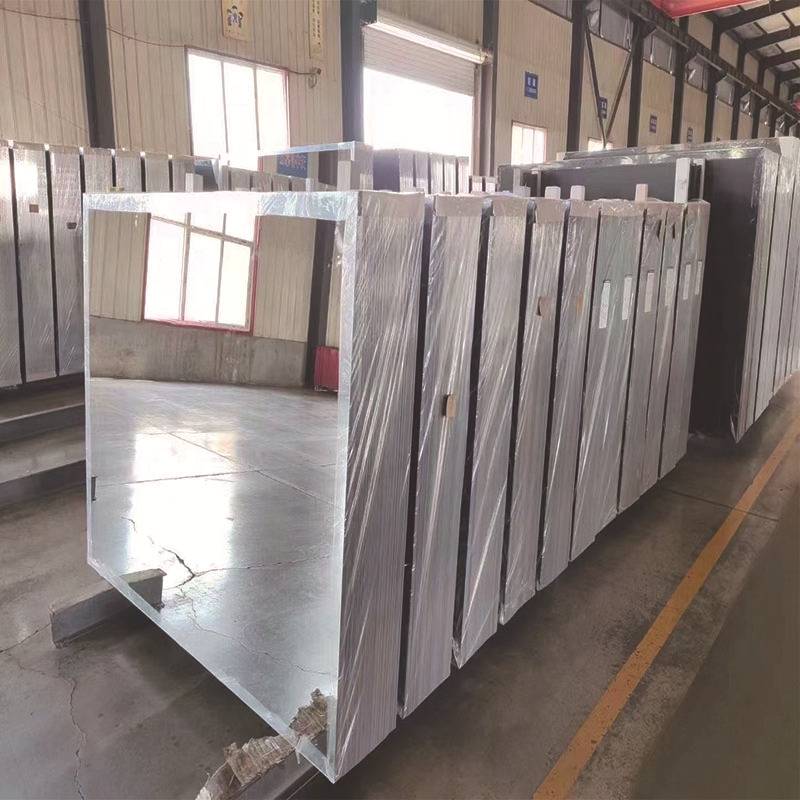Thermal Tempering of Glass An Overview
Thermal tempering of glass is a widely used process that enhances the strength and thermal resistance of glass products. It is a vital technique in various industries, including construction, automotive, and consumer goods. Understanding the principles and benefits of thermal tempering can help manufacturers and consumers alike appreciate the advantages of using tempered glass.
What is Thermal Tempering?
Thermal tempering, also known simply as tempering, is a heat treatment process applied to glass to improve its mechanical and thermal properties. The process involves heating the glass to a high temperature, typically between 600°C and 650°C (1112°F to 1202°F), and then rapidly cooling it. This cycle of heating and cooling creates differential stress within the glass, resulting in a stronger product. The tempered glass produced is about five to six times stronger than non-tempered glass of the same thickness.
The Process of Thermal Tempering
The thermal tempering process can be broken down into several key steps
1. Heating The glass is uniformly heated in a tempering oven to a specific temperature. This pre-heating allows the glass to reach a state just below its softening point, where it becomes pliable.
2. Soaking The glass maintains the high temperature for a required duration, ensuring that its entire thickness is uniformly heated. This step is critical for achieving consistent tempering throughout the glass.
3. Cooling (Quenching) After soaking, the glass is rapidly cooled using high-velocity air jets. This cooling process occurs differently on the surface compared to the interior, creating compressive stress on the surface and tensile stress within. This stress distribution is essential for the increased strength and safety of the glass.
4. Inspection Finally, tempered glass is inspected for defects and to ensure that it meets the required standards for strength and quality.
thermal tempering of glass
Benefits of Thermal Tempering
The primary advantage of thermal tempering is the increased strength of the glass, which makes it less susceptible to breaking under stress or impact. In addition to strength, several other benefits make tempered glass an ideal choice for various applications
- Thermal Resistance Tempered glass can withstand significant temperature changes, making it suitable for applications where temperature fluctuations are expected. This characteristic is crucial in environments such as buildings with large glass facades or in automotive windows exposed to sunlight and varying temperatures.
- Safety In the event of breakage, tempered glass shatters into small, blunt pieces rather than jagged shards, significantly reducing the risk of injury. This safety feature makes it preferable for use in public spaces or areas where safety is a concern.
- Versatility Tempered glass can be manufactured into various shapes and sizes, allowing for a wide range of applications, including shower doors, glass railings, and structural glass elements. Its versatility extends to decorative glass applications, which can enhance aesthetic appeal while maintaining strength and safety.
- Energy Efficiency With advancements in glass coatings and treatments, tempered glass can boost energy efficiency in buildings. It can be combined with low-emissivity (low-e) coatings to reduce heat transfer, contributing to better thermal performance and lower energy costs.
Applications of Tempered Glass
The applications of thermal tempered glass are vast and varied. In architecture, it is used in facades, windows, and doors to provide safety, thermal insulation, and aesthetic appeal. In the automotive industry, laminated and tempered glass is critical for windshields and side windows, contributing to vehicle safety and structural integrity. Additionally, consumer products like glass tables, cooktops, and even smartphone screens utilize tempered glass for its durability and resistance to thermal shock.
Conclusion
In conclusion, thermal tempering of glass represents a significant advancement in glass technology, enhancing its safety, strength, and thermal resistance. This process has made tempered glass a preferred choice across various industries, offering not only functional benefits but also aesthetic possibilities. As technology continues to evolve, the applications and benefits of thermal tempered glass are likely to expand, making it a pivotal material in modern construction and manufacturing.
 Afrikaans
Afrikaans  Albanian
Albanian  Amharic
Amharic  Arabic
Arabic  Armenian
Armenian  Azerbaijani
Azerbaijani  Basque
Basque  Belarusian
Belarusian  Bengali
Bengali  Bosnian
Bosnian  Bulgarian
Bulgarian  Catalan
Catalan  Cebuano
Cebuano  Corsican
Corsican  Croatian
Croatian  Czech
Czech  Danish
Danish  Dutch
Dutch  English
English  Esperanto
Esperanto  Estonian
Estonian  Finnish
Finnish  French
French  Frisian
Frisian  Galician
Galician  Georgian
Georgian  German
German  Greek
Greek  Gujarati
Gujarati  Haitian Creole
Haitian Creole  hausa
hausa  hawaiian
hawaiian  Hebrew
Hebrew  Hindi
Hindi  Miao
Miao  Hungarian
Hungarian  Icelandic
Icelandic  igbo
igbo  Indonesian
Indonesian  irish
irish  Italian
Italian  Japanese
Japanese  Javanese
Javanese  Kannada
Kannada  kazakh
kazakh  Khmer
Khmer  Rwandese
Rwandese  Korean
Korean  Kurdish
Kurdish  Kyrgyz
Kyrgyz  Lao
Lao  Latin
Latin  Latvian
Latvian  Lithuanian
Lithuanian  Luxembourgish
Luxembourgish  Macedonian
Macedonian  Malgashi
Malgashi  Malay
Malay  Malayalam
Malayalam  Maltese
Maltese  Maori
Maori  Marathi
Marathi  Mongolian
Mongolian  Myanmar
Myanmar  Nepali
Nepali  Norwegian
Norwegian  Norwegian
Norwegian  Occitan
Occitan  Pashto
Pashto  Persian
Persian  Polish
Polish  Portuguese
Portuguese  Punjabi
Punjabi  Romanian
Romanian  Russian
Russian  Samoan
Samoan  Scottish Gaelic
Scottish Gaelic  Serbian
Serbian  Sesotho
Sesotho  Shona
Shona  Sindhi
Sindhi  Sinhala
Sinhala  Slovak
Slovak  Slovenian
Slovenian  Somali
Somali  Spanish
Spanish  Sundanese
Sundanese  Swahili
Swahili  Swedish
Swedish  Tagalog
Tagalog  Tajik
Tajik  Tamil
Tamil  Tatar
Tatar  Telugu
Telugu  Thai
Thai  Turkish
Turkish  Turkmen
Turkmen  Ukrainian
Ukrainian  Urdu
Urdu  Uighur
Uighur  Uzbek
Uzbek  Vietnamese
Vietnamese  Welsh
Welsh  Bantu
Bantu  Yiddish
Yiddish  Yoruba
Yoruba  Zulu
Zulu 

